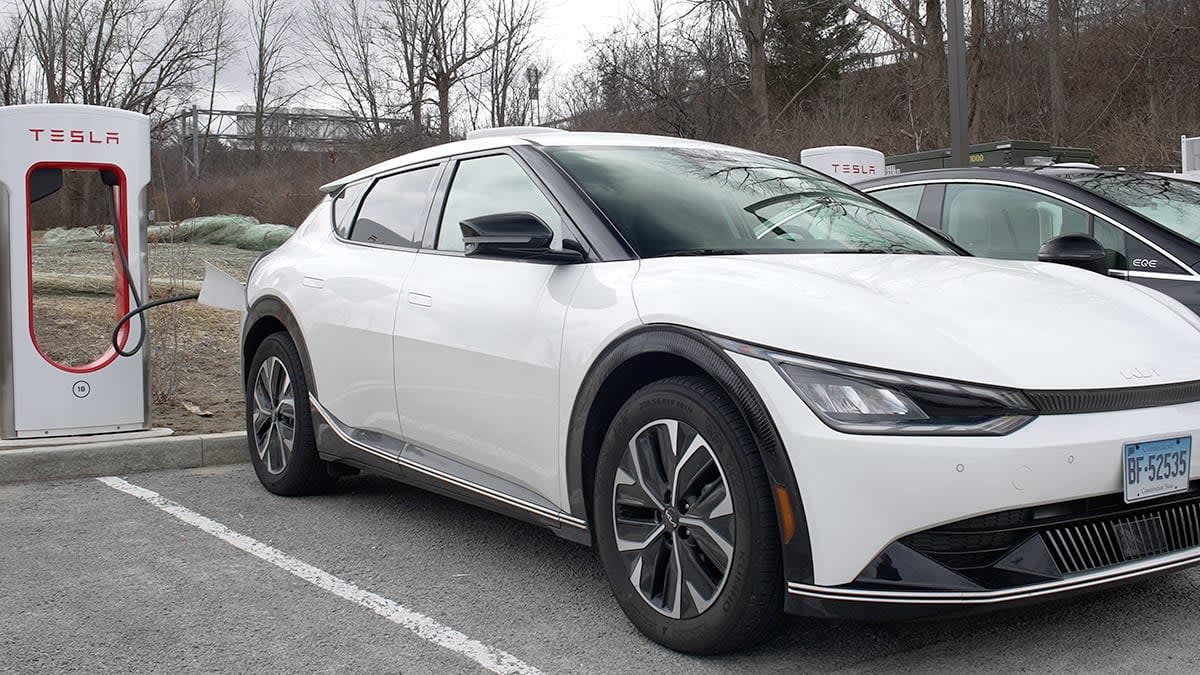Location: 1 Starr Ridge Road, Brewster, N.Y.
Distance from Auto Test Center: 79 miles
Charging fee: $0.49/kWh
Located near the junction of Interstates 84 and 684, this Supercharger sat behind a small shopping center with a Dunkin’ and a Sherwin-Williams paint store. There was only a gas station within walking distance, and drivers charging late at night could feel isolated, especially after the Dunkin’ closed.
Our experience getting hooked up mirrored what Alex experienced with the Lucid Air. Both the EV6 and EQE have their charge ports on the passenger-side rear, and they’re fairly close to the back of the car. But because the Supercharger cables are oriented on the right side of the charger and too short to reach the ports on the left side of the car, we had to park in the next space over rather than the one that corresponded to the charger. For example, to use charging station 1A you have to park in the space for station 1B—to the right of 1A—in order for the cable to reach. This effectively blocks 1B from being used by any Tesla, though a non-Tesla can potentially use it . . . by parking in space 1C.
The EV6 Alex drove would not charge on the first station he hooked up to. There were no issues accessing the charge plug and connecting to the car. We heard a series of clicks and other noises as the charging station and the car’s onboard charger communicated. The EV6 even made its standard “charging started” announcement. But within about 30 seconds a fault would appear on the app, and charging would stop.
This happened a few times, so we moved the car to a different charging station, which worked flawlessly. The Mercedes-Benz that Jon was driving also connected without any problem and began charging on the first attempt.
We brought the EV6 because, like the Lucid, it uses a higher voltage electrical architecture that enables some of the fastest charging speeds available when connected to a 350-kW charger (like those from Electrify America). But we saw a max of 40 kW when connected to the Supercharger. The EQE, which charges at a similar voltage to a Tesla, reached a rate of 76 kW.
These chargers are capable of charging a Tesla at a rate of up to 250 kW, which the automaker claims can add 75 miles of charge in 5 minutes and charge at rates of up to 1,000 miles per hour. This would equate to giving our EQE about 16 miles of range for every 5 minutes of charging time, or just over 190 miles in an hour.
Source link
